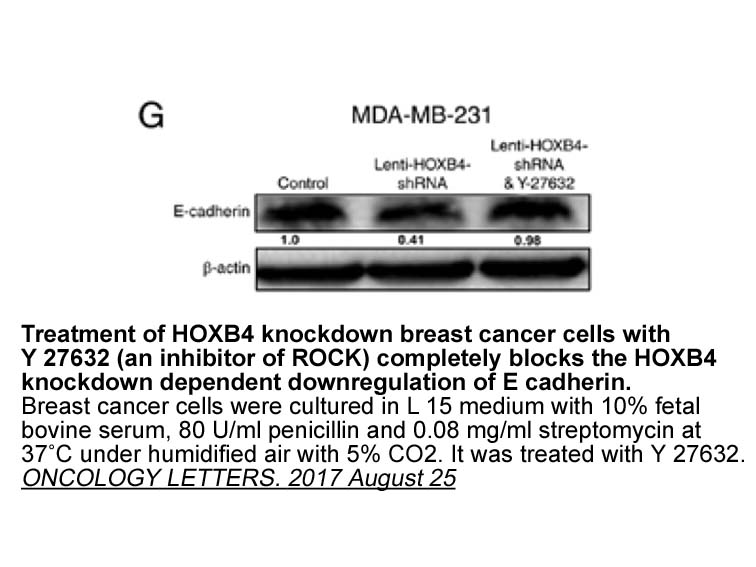Archives
JQ1 receptor The relationship between the apelinergic
The relationship between the apelinergic and opioid systems has been previously reported (Lv et al., 2011, Yang et al., 2010). Lv and colleagues showed that naloxone has a suppressive effect on apelin-induced depression-like behavior in mice (Lv et al., 2012a). Furthermore, heterodimerization of GPCRs takes place functionally and physiologically (Milligan and Smith, 2007, Panetta and Greenwood, 2008). It has been documented that apelin receptors form a heterodimer with opioid receptors and induce signal transduction as well as cell proliferation which evoked by those receptors agonist (Li et al., 2012). Barki-Harrington et al. (2003) demonstrated that one receptor antagonist effectively blocks trafficking and downstream signaling of two different receptors simultaneously. According to the above mentioned reports and our data, it seems that opioidergic system could be indirectly involved in apelin effects. Therefore, it can be proposed that one of the reasons for the induction of tolerance to the antinociceptive effect of apelin is opioid-mediated signaling. Even though, this issue needs further investigations.
Another finding of this study was down regulation of apelin receptors in spinal cord of the chronic apelin-treated rats. The agonist-induced  JQ1 receptor of GPCRs plays multiple roles in the physiological regulation of signal transduction. Endocytosis is a phenomenon causes functional desensitization or re-sensitization (Ferguson et al., 1998) of signal transduction by reducing the density of the receptors in the cell membrane and promoting lysosomal degradation of the receptors (Kallal et al., 1998, Roettger et al., 1995). Such regulatory processes are thought to be involved in the membrane trafficking of the receptors and can mediate opposite effects on the regulation of receptor signaling (Böhm et al., 1996, Ferguson et al., 1998).
Numerous studies indicated that receptor down-regulation contri
JQ1 receptor of GPCRs plays multiple roles in the physiological regulation of signal transduction. Endocytosis is a phenomenon causes functional desensitization or re-sensitization (Ferguson et al., 1998) of signal transduction by reducing the density of the receptors in the cell membrane and promoting lysosomal degradation of the receptors (Kallal et al., 1998, Roettger et al., 1995). Such regulatory processes are thought to be involved in the membrane trafficking of the receptors and can mediate opposite effects on the regulation of receptor signaling (Böhm et al., 1996, Ferguson et al., 1998).
Numerous studies indicated that receptor down-regulation contri butes to the reduction of drugs effects following their chronic administration (He et al., 2002, Sim-Selley et al., 2006). It has also been shown that APJ strongly internalized in the rats' brain after the administration of apelin fragments (Reaux et al., 2001). Moreover, it has been well established that the desensitization of the apelin receptor (Choe et al., 2000) and it's internalization (Evans et al., 2001, Reaux et al., 2001) represent another mechanism which participates in the reduction of apelin signaling (Masri et al., 2005). Similarly, the APJ receptor down-regulation which occurred in this study could be considered as a reason for apelin analgesic tolerance.
To confirm the origin cause of receptor down-regulation, we focused on corticosterone elevation, which is an important parameter in endogenous apelin production (Bülbül et al., 2016) as well as morphine tolerance (Iwai et al., 2012). Bulbul et al. indicated a correlation between central apelin administration, corticosterone level and the HPA axis activation. They showed that endogenous central apelin significantly decreased following 5-days of homotypic stress, while its production increased following 7-days of heterotypic stress loading (Bülbül et al., 2016).
It has been shown that β-arrestin and ERK1/2 are involved in the subcellular mechanism, internalization and down-regulation of apelin receptors (Ceraudo et al., 2014). It has been reported that the increase of calcium (Tobin et al., 2008), inhibition of cAMP (Habata et al., 1999) and apoptosis via APJ/PI3K/Akt are the main apelin signaling pathways (Xie et al., 2007). In other words, the above mentioned mechanisms also occur in tolerance situations of other drugs (Akbarali et al., 2014, Bodnar, 2013, Welch and Olson, 1991). Hence, further investigations regarding these pathways would be promising for clarifying the apelin analgesic tolerance.
butes to the reduction of drugs effects following their chronic administration (He et al., 2002, Sim-Selley et al., 2006). It has also been shown that APJ strongly internalized in the rats' brain after the administration of apelin fragments (Reaux et al., 2001). Moreover, it has been well established that the desensitization of the apelin receptor (Choe et al., 2000) and it's internalization (Evans et al., 2001, Reaux et al., 2001) represent another mechanism which participates in the reduction of apelin signaling (Masri et al., 2005). Similarly, the APJ receptor down-regulation which occurred in this study could be considered as a reason for apelin analgesic tolerance.
To confirm the origin cause of receptor down-regulation, we focused on corticosterone elevation, which is an important parameter in endogenous apelin production (Bülbül et al., 2016) as well as morphine tolerance (Iwai et al., 2012). Bulbul et al. indicated a correlation between central apelin administration, corticosterone level and the HPA axis activation. They showed that endogenous central apelin significantly decreased following 5-days of homotypic stress, while its production increased following 7-days of heterotypic stress loading (Bülbül et al., 2016).
It has been shown that β-arrestin and ERK1/2 are involved in the subcellular mechanism, internalization and down-regulation of apelin receptors (Ceraudo et al., 2014). It has been reported that the increase of calcium (Tobin et al., 2008), inhibition of cAMP (Habata et al., 1999) and apoptosis via APJ/PI3K/Akt are the main apelin signaling pathways (Xie et al., 2007). In other words, the above mentioned mechanisms also occur in tolerance situations of other drugs (Akbarali et al., 2014, Bodnar, 2013, Welch and Olson, 1991). Hence, further investigations regarding these pathways would be promising for clarifying the apelin analgesic tolerance.
Conclusion
Acknowledgments
This study was financially supported by Physiology Research Center and Medical Faculty of Kerman University of Medical Sciences to Elham Abbasloo (Grant Number 92.79).